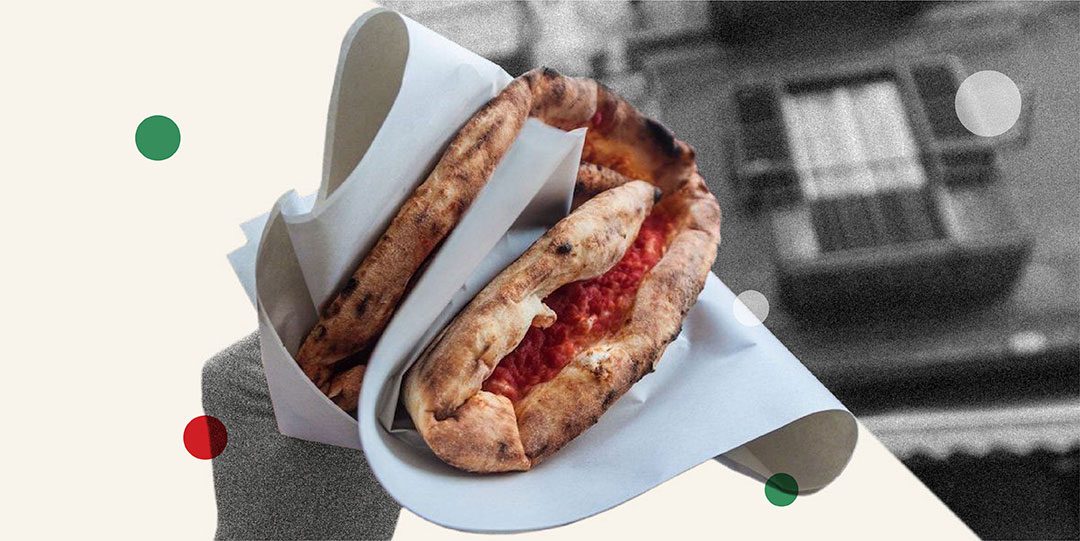Pizza

Accento
Pizza, food of the people
Words by Kristal Trotter
New pizza styles and toppings are catering to demographics with different palates, and while I’m excited to witness today’s pizza culture, I’d also like to remember how it all started.
Way before the pizza wars, determined to prove which style of pie dominated over all the others – be it Chicago deep dish, Chicago thin, Detroit pizza, Grandma, Sicilian, New York slice, New Haven, traditional American…the list goes on and on – there was just pizza, from Naples. And way before the early 2000s, when Neapolitan pizza started to become a trend worldwide, an upscale dining experience where a Margherita can cost you $22, a symbol of authenticity, Italian culture and artisanal excellence, pizza was plebeian.
I think about an episode of the In The Cut podcast, in which Jon Gray, Pierre Serrao and Lester Walker of the Ghetto Gastro collective mention the importance of the affordability of the NY slice. In a densely populated city with high cost of living, a dollar-slice meant survival for many, and in an over populated nineteenth century Naples, it’s the blue-collar nature of pizza that made it successful. In fact, a large part of the population could get by on this dish given its low cost and its availability. In the 1800s, Neapolitans could buy a slice of pizza for two soldi. In journalist Matilde Serao’s book, Il Ventre di Napoli (The Belly of Naples) published in 1884, she listed what other foods Neapolitans could afford for that price: a little paper cone of fried fish, ten boiled chestnuts, a portion of zucchini or eggplant marinated in vinegar and put on a piece of bread brought from home, a piece of boiled octopus, and all kinds of fruits. One quarter of a pizza cost three soldi, whereas a whole pizza was twelve soldi (sixty cents of a lira).
“A pizza that costs two centesimi is enough for a man, a pizza that costs two soldi can satisfy a whole family.” – Alexander Dumas
In thinking about Italy before and after its unification, I can understand why Neapolitans are adamant about crediting Naples for being the birthplace of pizza. In the mid-twentieth century, pizza and pizzeria were exclusively Neapolitan words, and solely a Neapolitan phenomenon for 200 years until its total globalization, which has been a reality only of the last few decades of the twentieth century. This dish went beyond the city limits and spread to northern Italy only in the 1950s, after the Second World War. It’s safe to say that not everyone is a fan of the Risorgimento, but purists be aware, maybe tradition isn’t as inflexible as we think it is. In Inventing the Pizzeria, published in 2009, author Antonio Mattozzi explains that although the “true” Neapolitan pizzas are the Marinara and the Margherita, pizza is inherently flexible, and that already in the nineteenth century, many ingredients were put on pizzas depending on the taste and requests of the customer. They were templates to which the pizzaiolo added – and still does today – other ingredients. Like a canvas, local produce painted each leavened disc with regional flavors. With the proximity to the Tyrrhenian Sea, for instance, a Marina pizza could be topped with seafood like anchovies, various molluscs, mussels and clams, all fished from the Gulf of Naples. Mattozzi goes on to say that this flexibility has given a chance to many small businesspeople to open their own business and adapt their pizzas to the most diverse imaginable local conditions.
The clam pizza of legendary New Haven pizzeria, Frank Pepe Pizzeria Napoletana, comes to mind, as well as the more recent Cuts & Slices Pizzeria, founded in 2018, a black-owned pizzeria and one of the most popular spots in New York City. This pizzeria is an example of how local is no longer limited to local sourcing and geographical influences, but extends to the palate of local communities, which can be rooted elsewhere, shifting traditional notions of what local tastes like. Owners Randy and Ashlee Mclaren offer unique pizza toppings inspired by their childhood flavors, in a menu that emphasizes the spiciness and boldness of the Caribbean, with combinations like chicken and waffles, sweet chili oxtail, or shrimp and lobster. Alongside the signature Caribbean restaurants present in their neighborhood, Cuts & Slices Pizzeria is showing how their community can enjoy quality delicious meals as well. When it comes to flavors, it’s no different than the pizzas of the Midwest, which shifted away from the Neapolitan-style in the 1940s, and adapted to the Midwestern palette with sweeter sauces.

Pizza has always been food of the people, and it’s different wherever you go. Both Chicago deep dish and its rival tavern-style thin crust, were meant for manual laborers and the working class neighborhoods of the Windy City, with the former being a whole meal on a plate filled with leftover meats and vegetables, while the latter was meant to be snackable square cut slices to feed hungry factory workers and entice them to order extra drinks. The NY slice is perfect for a city that’s always on the go. Folding the crispy, blistering crust in half, prevents the grease from the toppings from dripping on your clothes, and if you’re a “pro,” the correct stance will save your sneakers, too. The fold also helps you “bus it down fast,” as Walker puts it, while you’re inevitably running to catch the train or the next bus. Few people, however, know about the pizza a portafoglio or a libretto, a uniquely Neapolitan way of folding a whole pizza in half and then half again, like a wallet or a small booklet, then eaten while standing. If you search for images of this type of fold, you’ll find the famous photo of former president Bill Clinton eating his pizza a libretto at Di Matteo in Naples, during the 1994 G7 summit. In National Dish, written by Anya Von Bremzen, published in 2023, there is a mention of pizzaiolo Gino Sorbillo suggesting to eat pizza folded in four, because “one must never forget that pizza was born as cucina di strada.” Pizza scugnizza – pizza the street urchin – was fast food well before the term was coined.
Pizza culture is changing, and pizzaiolo Frank Pinello has been documenting it for the last 10 years. First as host of The Pizza Show, a pop culture classic and your go-to resource for American pizza styles, and now as host of his new series, Pizza With Frank, where he explores the modern pizza scene through interviews and guided food tours with his guests; each episode ending in an impromptu outdoor pizzeria with pizzas cooked in a Gozney pizza oven. It’s thanks to these advanced portable ovens that pop-up “pizzerias” have been on the rise in New York, showing up at all kinds of events, catering to people who are open to trying the pizzaiolo’s latest creations, not burdened by the expectation of what should be Italian. Pizzas with toppings like braised rabbit from pizzaiolo Augie Russo, or crumbled Egyptian fava-bean falafel squirted with halal-cart white sauce from pizzaiola Natalie DeSabato, of which former New York Times food critic Pete Wells wrote that he “enjoyed every heretical square inch.” It’s as if the East coast is catching up to what the West coast has been doing for years. Wolfgang Puck’s signature smoked salmon pizza, anyone?
I’ve learned that “best pizza” and “traditional pizza” are not one and the same. What is a fad, opposed to what people actually want to eat and can afford? Only time will tell, but a humble margherita is always a great place to start.
If you like this content,
Please consider supporting us!
Please consider supporting us!
Accento operates as a self-funded project, and every new membership, purchase, or reshare plays an important role in our growth and content creation.

